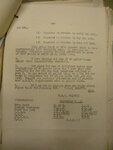Airframes
Benevolens Magister
Standard fit on the Mk.IX was the 45 gallon 'slipper' tank, and later, the larger 'cigar-shaped' tank, the capacity of which I can't remember at the moment, without checking my references.
Both were used on 'sweeps', and jettisoned once over the Continental coast.
Both were used on 'sweeps', and jettisoned once over the Continental coast.

